Agricultural sprayer drones are becoming increasingly popular among farmers and crop dusters in the United States. These unmanned aerial vehicles (UAVs) are capable of spraying crops with precision, reducing the amount of pesticides needed, and increasing efficiency. However, to operate an agricultural sprayer drone and spray chemicals aerially, you need to obtain specific licenses from the Federal Aviation Administration (FAA) and your state's regulatory agency.
Here is a comprehensive guide on licensing and compliance for the use of agricultural sprayer drones in the United States.
FAA Part 107 Drone Pilot License
First and foremost, anyone operating an agricultural sprayer drone needs to have an FAA Part 107 drone pilot license. This license certifies that you have the knowledge and skills required to fly a drone safely and legally in the National Airspace System. To obtain a Part 107 license, you need to be at least 16 years old, pass an aeronautical knowledge test, and undergo a security screening by the Transportation Security Administration (TSA).
Drone Registration and N-Number
Once you acquire your agricultural drone, it must be registered with the FAA. As part of the registration process, you will receive an N-number—a unique identification number, typically beginning with the letter "N." This number is critical for tracking and identifying the drone, ensuring compliance with aviation safety standards and regulations.
FAA Part 137 License
In addition to the Part 107 license, you also need to obtain an FAA Part 137 license to operate an agricultural sprayer drone. This license is the same one that crop dusters use for aerial application and covers the specific regulations that apply to spraying agricultural chemicals from an aircraft. The Part 137 license ensures that you are aware of the safety and environmental considerations involved in spraying crops from the air.
Part 137 Exemption
If you're using a drone that weighs over 55 pounds, you will also need to obtain an exemption from some parts of the Part 137 regulations. This exemption can be obtained through the FAA's regulations.gov website. The exemption process includes demonstrating that your drone is safe and can operate without posing a risk to people or property on the ground. Once you receive your Part 137 exemption for your specific drone model, you can contact your local Flight Standards District Office (FSDO) to apply for the Part 137 license.
Aerial Commercial Applicator License
In addition to the FAA licenses, you also need to obtain an aerial commercial applicator license from your state's regulatory agency to spray chemicals aerially using a drone. The requirements for obtaining an aerial commercial applicator license can vary depending on your state. Typically, you'll need to demonstrate that you have the necessary knowledge and training to apply pesticides safely and effectively from the air. This may involve completing an approved training program, passing an exam, and demonstrating your skills in a field test. You may also need to show that you have liability insurance and are in compliance with all relevant environmental regulations.
Conclusion
In summary, to fly and spray with an agricultural sprayer drone in the US, you need a Part 107 drone pilot license, a Part 137 license, and a Part 137 exemption. if your drone weighs over 55 pounds (DJI Agras T50 and DJI Agras T25 ) you will need to include a section in your part 137 exemption request to get an over 55 lbs exemption as well. Additionally, you'll need to obtain an aerial commercial applicator license from your state's regulatory agency to spray chemicals aerially using a drone. These licenses and exemptions ensure that you are operating your drone safely and legally and are aware of the regulations and considerations involved in aerial crop spraying.
It's important to research the specific requirements for obtaining an aerial commercial applicator license in your state, as the rules and regulations can vary. Additionally, make sure to keep up with the latest updates and guidelines from the FAA and your state's regulatory agency. Always operate your drone safely and responsibly and follow best practices for environmental and public safety.

